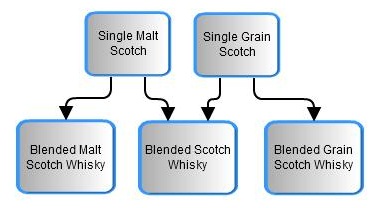When I think of whiskey I think of a rugged, unshaven, dusty cowboy walking through the saloon doors and sliding up to the bar. Bartender asks, “What’ll it be?” “Whiskey”, says the cowboy. However, this is not where it all began. The first documented existence of whisky came from Ireland. In the book “Annals of the Kingdom of Ireland” by Michael O’Clery, on page 785, there is a passage that talks about a character drinking and dying, on Christmas, from drinking too much “aqua vitae” aka whiskey. American whiskey, think bourbon, is very different from whiskey made in other parts of the world. A perfect example is Scotch whisky (notice that I spelled whiskey without the ‘e’).
Why is Scotch so different? Most Scotch has a smoky flavor often referred to as peatiness. This flavor is created when the malted barley is dried in kilns that are being fired with peat.

Peat, aka turf, is an accumulation of partially decayed vegetation such as grasses, fungi, trees, insects and the occasional animal.
The layers of material are not able to decompose completely because of the lack of oxygen and high pH. Peat is also flammable when it is wet or dry. Because of the abundance of peat in Scotland this material was used to heat, cook and of course power the kilns to dry the malted barley.
What is Scotch Whisky? Scotch is defined by “The Scotch Whisky Regulations 2009” under UK law. The regulations define how it must be made and labeled. If you are drinking Scotch you can be certain that the following conditions were met:
- Produced at a distillery in Scotland from water and malted barley (to which only whole grains of other cereals may be added) all of which have been:
- Processed at that distillery into a mash
- Converted at that distillery to a fermentable substrate only by endogenous (originate from within yeast cell) enzyme systems
- Fermented at that distillery only by adding yeast
- Has been distilled at an alcoholic strength by volume of less than 94.8% so that the distillate has an aroma and taste derived from the raw materials
- Wholly matured in an excise warehouse in Scotland in oak casks of a capacity not exceeding 700 liters for minimum of three years
- Retains the color, aroma, and taste of the raw materials used in, and the method of, its production and maturation
- Has no added substances, other than water and plain caramel coloring
- Has a minimum alcoholic strength by volume of 40% at bottling
Scotch Whisky Types
There are two types of Scotch whisky that can be bottle as is or made into blends. The two types are:
- Single malt Scotch: Single malt Scotch whisky is produced from water and malted barley at a single distillery.
- Single grain Scotch whisky: Single grain Scotch whisky is produced from water and malted barley but can also include grains of other malted or unmalted cereals. It must also be distilled at a single distillery.
It is important to note that the word ‘Single’ does not refer to what goes into the Scotch but rather that it must be produced at a ‘Single’ distillery.
Scotch Whisky Blends
Using single malt or single grain whisky, producers can create a variety of blends. There are 3 types of blends that are defined in “The Scotch Whisky Regulations 2009.”
- Blended malt Scotch whisky: Blend of two or more single malt Scotch whiskies from different distilleries.
- Blended grain Scotch whisky: Scotch and Blend of two or more single grain Scotch whiskies from different distilleries.
- Blended Scotch whisky: means a blend of one or more single malt Scotch whiskies with one or more single grain Scotch whiskies.
Scotch Whisky Regions
Currently there are 5 main whisky regions in Scotland. They are Lowland, Speyside, Highland, Campbeltown and Islay. Each one has their own distinctive quality.


Recent Comments